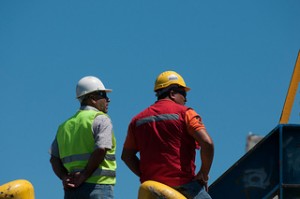 A recent Fast Company article talks about leading with farsightedness and leaders who are able to articulate possible futures in ways that are compelling and inclusive.
A recent Fast Company article talks about leading with farsightedness and leaders who are able to articulate possible futures in ways that are compelling and inclusive.
The article makes a distinction between leaders and truly visionary, game-changing leaders; we know however that those in the latter category – a Steven Jobs, for example – don’t come along very frequently. There’s no magic wand for creating vision nor is there a farsightedness pill.
“People want leaders who look beyond today,” the article by Erika Andersen states. “They want to have the sense there is a master plan to carry them through whatever short-term trials and tribulations arise…when leaders focus only on the current crisis or this quarter’s numbers, it seems to us that they’re more interested in maintaining the status quo or protecting themselves than in creating a successful future.”
People in an organization also want to know that a leader’s farsightedness is “based on a deep sense of what’s necessary, right, and good for the business and the team rather than what’s simply expeditious, popular, or self-serving.”
Sounds good. Vision and farsightedness are necessary qualities for a successful, long-term business because as I frequently say, Business Happens!
But how does an organization get there from here with the “vision thing?”
Actually the path to a Vested relationship includes a process, described in The Vested Outsourcing Manual, that not only encourages, it also embeds a shared vision and “living as we” mindset in order to achieve the type of long-term collaboration and mutual value that creates a successful long-term partnership.
One of the first of the 10 Elements of Vested agreement directs the parties in an enterprise to work together on a joint vision to guide them for the duration of the Vested relationship. The vision statement comes only after they understand the business model and actually map it.
The shared vision statement is the cornerstone of a Vested partnership, because it describes the larger, guiding principles for the business relationship and the reasons for going forward with it. It’s the foundation of the enterprise. A cooperative and collaborative mindset opens a conversation between the parties: The result is that they share what is needed, admit to gaps in capability, and aim to focus on the benefits that the other party can bring to enhance any gaps in capability. That vision and alignment then moves seamlessly to a Statement of Intent drafted by the outsourcing teams, from there to the Desired Outcomes and on to the long-term win-win.
But it all starts with the base that a joint, shared vision provides.
The Fast Company article notes that farsighted leaders will model the vision, articulate it in an inclusive way, see past the obstacles and invite others to participate in the vision. That’s essentially the Vested process, except that it doesn’t necessarily have to reside with one or two leaders.
Perhaps the really visionary leader is the one who sees that he or she can’t do it alone. That’s where the Vested process enters.
So it goes beyond merely “sensing” that there’s a master plan—it’s making sure that it’s a living, visionary entity that’s there for everyone to nurture.
Image: Shared vision by munhitsu via Flickr cc